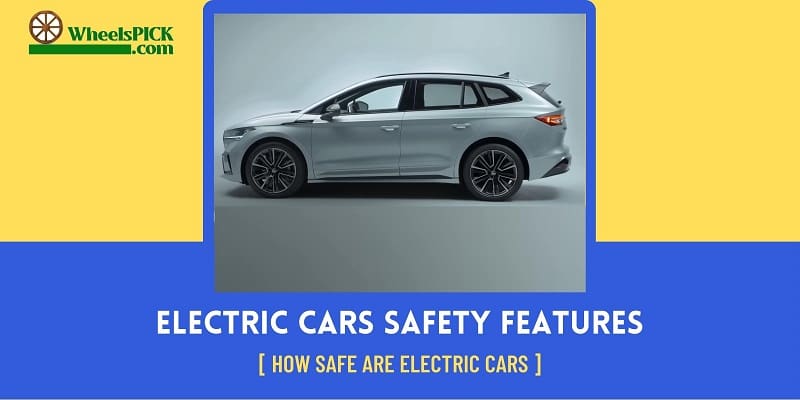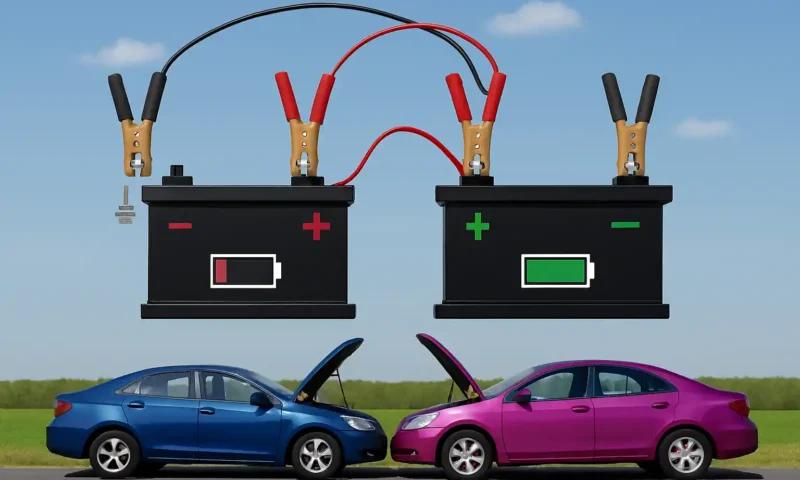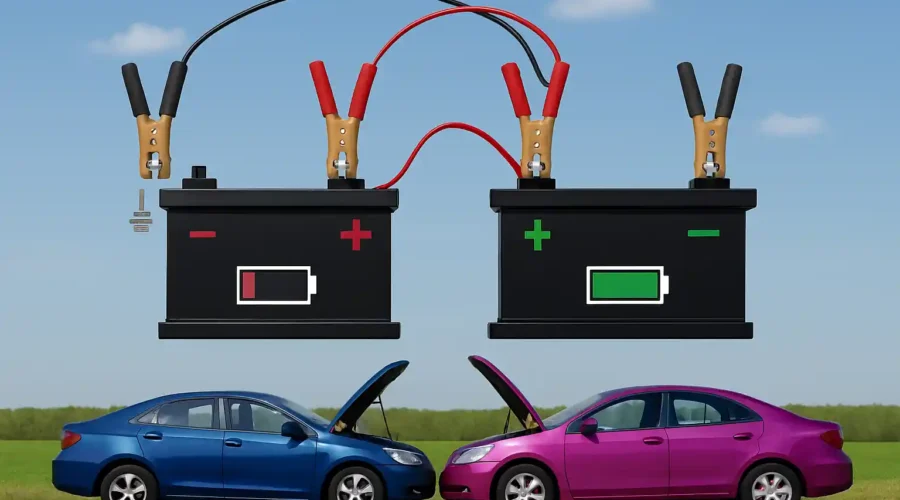With the increasing EV market growth, it’s a no-brainer that more and more people are willing to reduce their carbon footprint and save natural resources. Hence, EVs have been in the spotlight for the past few years. But what are EVs, and how do electric cars’ safety features differ from conventional ones?
Is it safer, and what are the manufacturers doing to keep them safe in the long run? Hold your horses! Luckily, we have all these answers and more! This article will dig deep into knowing everything about electric cars, mainly their differentiated features. Rest assured, you will undoubtedly understand if EVs are worth the buck by the end of this read, so let’s dive in!
How Safe Are Electric Cars
Fortunately, the electric cars’ protective features are highly advanced. Some vital controls that help drivers during every ride are adaptive cruising control, blind spot warnings, forward collision warnings, lane-keeping assistance, rear cross-traffic warnings, and more. However, these are simply the tip of the iceberg. To know more details about the intuitive EV safety features, read on!
Electric Cars Vs. Gasoline – Do Their Safety Features Differ?
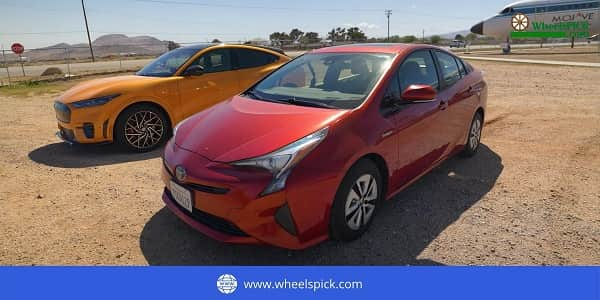
Many safety features in EVs are also present in gas-powered vehicles. However, some unique features, such as heightened safety, aren’t incorporated in gasoline-driven cars.
The most vital safety features in EVs are regenerative brakes which recapture lost energy into the batteries. Moreover, EVs decelerate earlier during brakes, resulting in minimized chances of accidents and hazards.
Are There Any EV Batteries Environmental Impact?
Every big and up-and-coming manufacturer is pivoting towards manufacturing EVs solely within the next few years. Experts believe that electrical vehicles are much friendlier to the climate than traditional ones. However, they still have some environmental impacts. What are they? Let’s have a look.
-
The Electricity
EVs produce lower emissions. However, they utilize coal burning to charge the electricity. Although the amount of average power that this EVs draw is considered for the EV charging stations, they’re greener than conventional rides.
Moreover, EVs are also highly efficient due to their batteries. On the other hand, researchers found that there have been initiatives to improve the electrical grids, and the progress is positive.
-
Raw Material Issues
Lithium-ion batteries rely on rare earth elements, lithium, and cobalt. These raw materials, especially cobalt, are quite problematic and hazardous when exposed to humans. The process also requires smelting, emitting potent sulfur oxide levels into the environment.
Safety Features Of EVs

According to an article by Driving Insights, an EV scored slightly less than the full-blown ANCAP five stars in New Zealand. It was judged based on crash test performance and its protection degree.
Fortunately, most electric vehicles score somewhere near the five-star rating in crash tests due to their blind spot warnings, rear cross-traffic alerts, AEB, lane-keeping assistance, adaptive cruising controls, and more.
Even better, Tesla, Mercedes-Benz, and Audi models offer complete driverless modes due to such advances. However, we must know about these features in detail to fully comprehend the safety lengths of EVs. So, keep reading.
-
Autonomous Emergency Braking
AEBs are systems that consistently track roads ahead and halt the vehicle automatically if the driver delays acting.
-
Adaptive Cruise Control
ACCs are systems embedded within vehicles that let users maintain a safe distance while staying within safer speed limits.
-
Lane-Keeping Assistance
Lane-keep leads drivers to gently steer back within tracks once the vehicle starts to drift away.
-
Rear Cross Traffic Alert
These alerts aid drivers in backing out of congested spaces where they might not see the approaching traffic properly.
-
Blind Spot Warnings
These monitoring and warning systems let the drivers detect other vehicles in the blind spot arena, thus, avoiding collision while changing lanes.
-
Forward collision warning
This mechanism alerts drivers when a potential collision is encountered and does so by scanning the cars around the EV.
-
Tyre Pressure Monitoring
The amazing monitoring assesses air pressure inside tires consistently and on the spot and notifies users if it requires filling up with a low-pressure warning alert, pictogram, or gauge on display.
-
Distance Alert
Distance alerts let cruisers know when they’re driving too fast compared to nearby vehicles and enable when the limit crosses 20mph.
-
Attention Assist
The system analyzes the driver’s usual driving behavior and detects errors, such as when the driver feels drowsy, to warn them to take a break.
-
Electronic Stability
This program prohibits the EV from spinning or sliding during bends, especially when the speed is over the limit. The wheels come with sensors that detect the possible spinning and sliding, thus, enabling smaller amounts of breaks to the respective wheels.
Are Electric Cars The Safest?

There’s no denying that EVs are inherently much safer than generic, internal combustion engine cars. However, it’s necessary to understand why and how they’ve become such and if any dangers are associated even with their optimized safety features.
-
Flammability
Lithium-ion batteries are the main source of energy for EVs. Luckily, there are lower risk rates associated with these in comparison. They protect against short circuits, fire explosions, and external damages due to their cooling agents and coolant liquids.
-
Air Quality
The best news is that EVs produce zero emissions against internal combustion engines, notorious for burning fuel and other hazardous chemicals and byproducts polluting the air quality. Due to the zero-emission achievement, the chances of EVs producing toxic air quality are slight to none.
-
Construction
The construction of EVs has a big role in making them entirely protective during accidents. Models such as the Jaguar i-Pace and Hyundai Ioniq 5 are designed with battery packs constructed as the vehicle’s platform, thus removing the powertrain elements from the rear and front ends of the EVs, enabling them to be highly efficient during accidents and crashes.
-
Motors, Batteries & Engines
EVs are physically petite and, thus, lightweight compared to gas-powered vehicles. They also require lower auxiliary systems with minimized inertia during accidents allowing the engineers to tackle most of the protective features and car’s movements. Moreover, since these eco-friendly vehicles don’t contain flammable liquids and oils, there are no chances of spills leading to serious accidents or explosions.
However, that doesn’t rule out that lithium-ion, high-density batteries come with flammable risks as they have electrolytic solvents, which can lead to overheating and, eventually, a fire. Although, EVs are considered much safer as the process of an EV battery catching fire is much more gradual compared to gas vehicles. The fatalities are thus lower, and so are the physical impacts.
On the other hand, battery packs can also endure overheating in EVs during charging, especially if filled via an ultra-rapid and high-voltage charging station.
This results in users being cautious about not overfilling the tanks and limiting recharging within 80%. Users should utilize lower output connectivity, such as a personal wall box in their offices or homes with 22kW low voltage outlets, especially if it’s with their home EV chargers.
-
Maintenance
We all understand that EVs don’t come with generic engines; thus, their systems have fewer moving parts.
With lower moving mechanisms and systems, the maintenance requirements minimize too. Since conventional vehicles are highly prone to breakdowns, users generally have to spend an arm and a leg towards maintaining and repairing them.
And although EVs require regular checkups and maintenance, their intervals are much lower. Thus, you save a ton! Needless to say, since the risks associated with the moving parts are minimized, so are the risks of hazards, accidents, and damages.
-
Electrical Source
It’s a no-brainer that the vital advantage of electrical power sources is that they’re not explosive like diesel or petrol. However, what about during a crash, charging, or leakage? Is it safe to charge your EV during rainy seasons?
Worry not; all these factors were considered before the safety regulations were mandated while manufacturing EVs and their respective charging necessities. While charging EVs in the rain, we know that water and electricity are the worst combinations.
However, unlike what most people get afraid of, most public EV charging portals and stations come with GFCI or Ground fault circuit interrupter. GFCI’s main motto is to pinpoint unexpected electrical surges and shut down the current supply in response.
Moreover, GFCIs are manufactured and styled to withstand most weather conditions like snow and heavy rainfall. However, just in case of any unforeseen consequences like electrical surges, GFCIs can respond quickly and keep the users and EVs safe. So, charging your EV at any place and time just got a lot safer!
How Safe Is EV Charging?
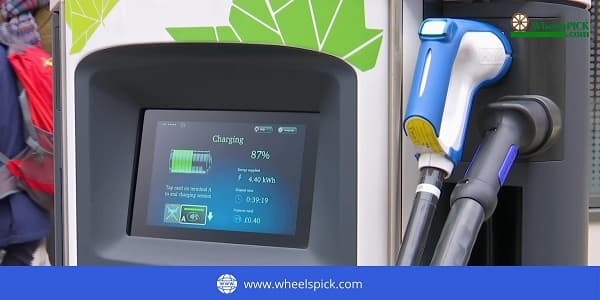
Have you ever wondered about the risks of recharging your EV? Can recharging be risky, and what are those risks? Let’s take a gander.
- It’s an absolute must to use extension leads, for example, outdoor reel cables, instead of extensions with multi-socket lead to avoid hazards.
- It’s wiser to regularly maintain and review the charging elements and lookout for wear and tear, which could lead to poor charging and electrical shocks.
- Never daisy chain the extension leads as it poses the highest risks of electrical shocks and fire.
- Lastly, check in with a professional now and then to inspect if the wirings are going strong and can support regular charging. If not, old worn-out wires could pose chances of fire hazards.
What Happens During A Crash?
Believe it or not, lithium-ion battery usage instead of traditional internal combustion engines comes with greater merit than we know. The substantial weight difference between EVs and traditional cars put a stronger positive effect on the overall safety of the users and vehicles.
EVs have embedded rechargeable energy-storing systems, which are slightly heavier than traditional engine systems.
However, due to typical physics knowledge, when two masses of varying weight collide, the heavier vehicle will have lower deceleration than the lightweight one. Thus, the heavier car will always be at lower risk during a crash.
What Else Can EVs Withstand?
So far, we’ve covered every important detail about EV’s safety specifications, but what else must potential buyers know? Keep reading to know a few more interesting safety features and how EVs react during crucial circumstances.
- The autonomous mechanism in EVs can save a lot of lives.
- All the safety features work in unison at all times for the safest travel.
- Since EVs practically pose zero fuel, there are no chances or risks of vehicles catching fire.
- Most EV models arrive with a space-saving spare tire for emergencies.
- Lastly, the best news is that EVs can tackle floods with no consequences whatsoever as it doesn’t contain a generic internal combustion engine.
FAQs (Frequently Asked Questions)
Q1. How Safe Are Electric Cars?
A) Electric cars have optimized safety features such as insulated high-voltage, and the electrical systems are automatically deactivated upon short circuits or collisions. EVs are also highly stable, with lower chances of rolling over.
Q2. Are EVs Safer Than Traditional Cars?
A) EVs' internal combustion engines are much safer and stabler than traditional ones.
Q3. What Are EVs' Most Common Issues?
A) EV owners often face common issues like deteriorating temperature sensors, malfunctioning screens, faulty exterior lights, and damaged seals.
Q4. What Are Some Disadvantages of Owning an EV?
A) EVs have lower traveling distance capacity, are expensive, and take quite some time to charge.
Q5. Do EVs Incur Higher Accidents?
A) EVs can cause greater damage than gas-powered cars because of their unparalleled acceleration and greater weight, especially e-trucks.
Q6. What Happens if EVs Catch Fire?
A) EVs run on lithium-ion batteries; thus, upon catching fire, it can result in a temperature rise, which is dangerous, and the emergency responders may be at even greater hazard of electrical shocks.
Q7. What Happens to EV Batteries During Accidents?
A) Since EVs are made of lithium-ion batteries, it contains high energy. Thus, the car is likely to catch fire during a wreck.
Q8. Which Is Safer, Gas or Electric Cars?
A) The IIHS published that EVs are much safer than gas-powered vehicles according to their crash records in 2022.
Conclusion
Let us all celebrate this day and age of modern technology, which has luckily gifted us with unparalleled vehicle advancements and electric cars’ safety features. Who would’ve thought there could be a day when we would work together to invest in such a great cause, right?
Thanks to modern technology, days where every lane and road filled with EVs isn’t that far! And even though EVs aren’t fully-proof, it doesn’t mean that they are more hazardous than conventional gas-powered cars, which is a big win for manufacturers and users. And as EVs are taking over roads by storm, perhaps the day when electric vehicles become the safest isn’t that far.

